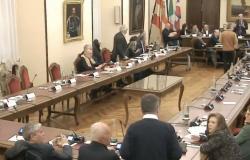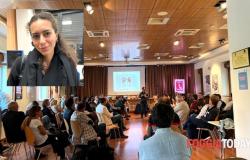(The questions are answered by volcanologist Giuseppe Mastrolorenzo, excluding number 2 which is answered by volcanologist Giuseppe De Natale)
We have seismic swarms when we are in the presence of a close and close series of earthquakes, while we talk about seismic frequencies when we are in the presence of one or more strong shocks and a series of weaker shocks at close range. In the Campi Flegrei they are produced by the release of stress in the rocks resulting from the deformation of the soil.
In the Campi Flegrei area we can have earthquakes even up to magnitude 5, in addition to theoretical considerations there are the historical chronicles of the period of the 1528 eruption to demonstrate this. A magnitude 5 earthquake has an energy 33 times greater than the 4.0 earthquake that occurred on 2 October 2023 which caused damage in via Pisciarelli.
Currently the authorities declare that there is no evidence of imminent risks, but more correctly we should speak of a permanent and difficult to assess risk. The volcanic phenomena in the Campi Flegrei can evolve very quickly, so it is right not to create alarmism but neither to underestimate the current situation.
We must necessarily hypothesize two scenarios: one optimistic, the other pessimistic. In the first we could have clearly legible precursors, such as large changes in the flows and composition of fumaroles, deformations of the ground in a specific area, concentrations of earthquakes, in short, signals that clearly indicate the approach of an eruption. In the pessimistic scenario, however, we could have a much more rapid process, with the opening of fractures in the rocks and rapid rising of the magma, a situation that could evolve even within hours. Moreover, the report of the Major Risks Commission in October 2023 does not exclude this type of scenario.
Based on our knowledge, we exclude correlations of this kind. The so-called rotten egg smell resulting from the emission of hydrogen sulphide (H2S) into the atmosphere, in the absence of fumarolic variations, depends on the meteorological conditions and particularly on the atmospheric pressure, the humidity of the area and the direction and speed of the wind, all factors widely variable. For example, with the mistral wind the smell can reach Naples and permeate the air in some areas of the city.
First of all because they were well built and then also due to the characteristics of the earthquakes in the Flegrean Area which, being of volcanic-tectonic origin, of low depth, have a moderate magnitude and produce predominantly vertical stresses of short duration in the epicentral area. Structures generally resist this type of stress. Furthermore, the columns remained partially buried until the eighteenth century (thus they also overcame the seismic crisis, which preceded the formation of Monte Nuovo). The greatest damage to buildings derives from transversal stresses, previously defined as wave-like, this allows us to look with moderate optimism at the resistance of our buildings, provided they are in a good state of maintenance and are not already affected by structural problems. However, checks are needed because the accumulation of effects, even minimal ones, of thousands of seismic events, can in the long run produce static damage.
We cannot make any kind of hypotheses. In the geological history of the Campi Flegrei there has been evidence of soil lifting up to 40 meters in height, such as the famous Starza terrace between Pozzuoli and Arco Felice, formed a few thousand years ago. We are currently almost at maximum levels, close to those of the Roman era, in the Pozzuoli area, while the submerged areas of Posillipo, Baia and Miseno testify to the prevalent subsidence of the outermost areas of the Caldera.
8 While the Campi Flegrei tremble, tremors sometimes occur on Vesuvius, is there a connection?
No, they are two different volcanic systems with different processes and with the emission of products that have different characteristics. Furthermore, Vesuvius is currently in a phase of slight subsidence. Its seismicity derives from settling processes after centuries of volcanic activity.
Tags: Campi Flegrei earthquake questions experts






